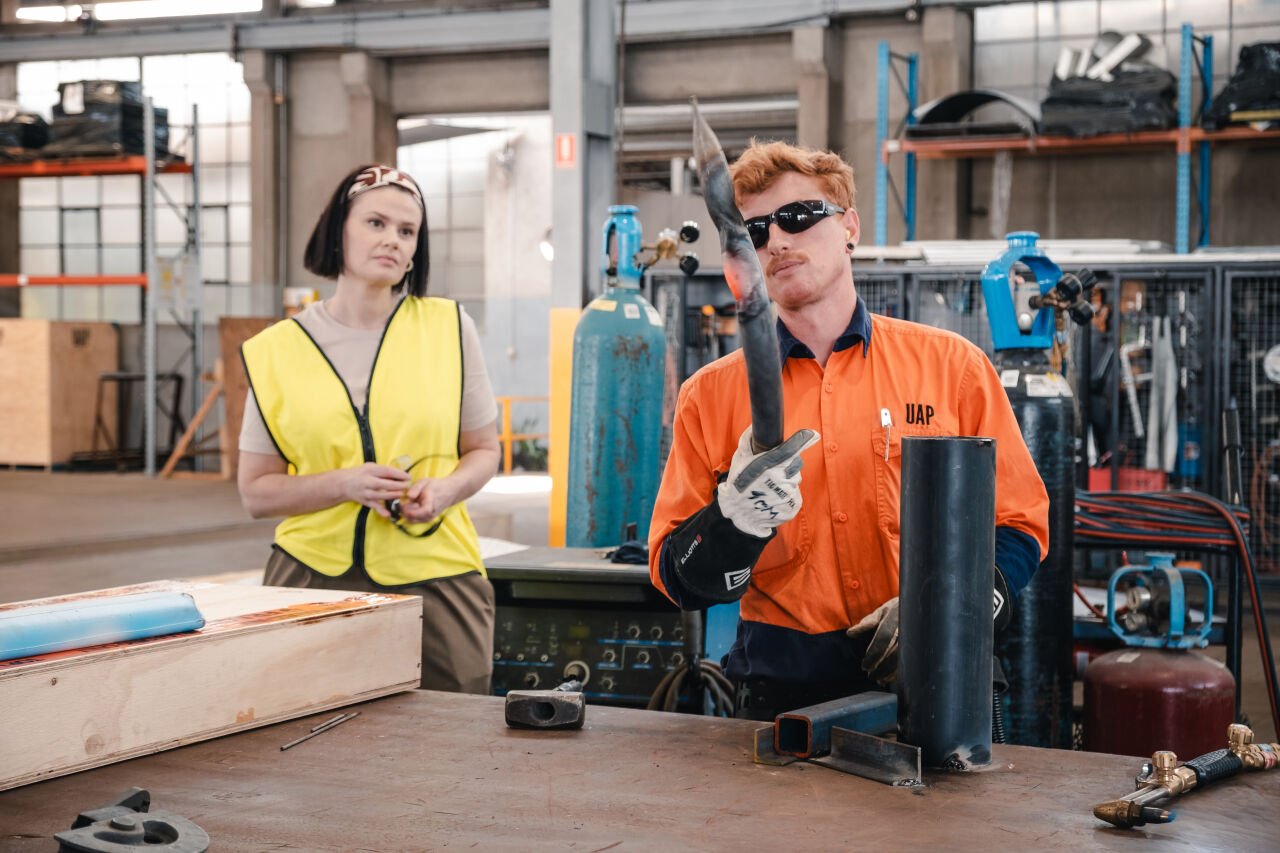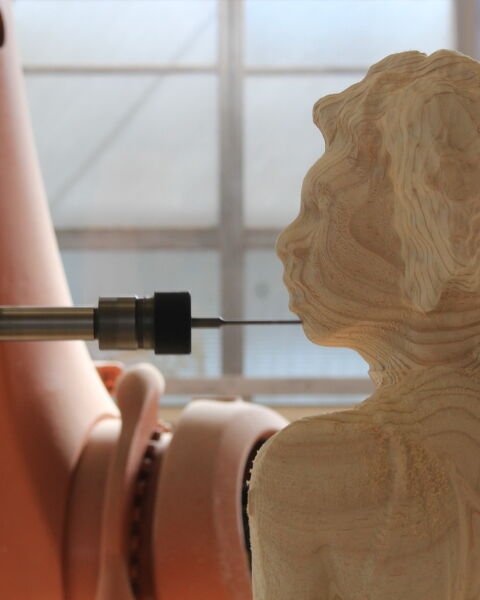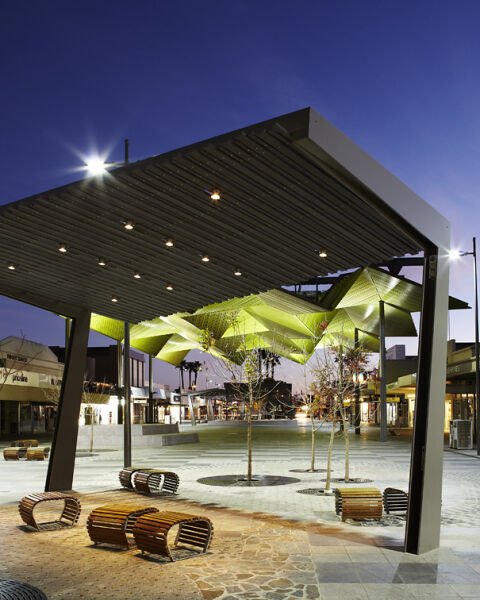Holding Space: Amanda's Search for Softness in a Hard World
In this interview, emerging artist Amanda opens up about her evolving practice—one rooted in lived experience, digital technology, and material exploration.
Interviewed by Tess Bakharia | Assistant Curator

Your work expertly navigates a range of complex themes, presented in a way that is immediately accessible. While focusing on care, health and disability, your work also traverses digital technologies to critically investigate the universal implications of the body's place within a rapidly evolving society. How do you hope audiences will react to your work?
Amanda Bennetts (AB) - I hope audiences have a visceral experience. Embodiment offers a universal yet profoundly personal entry point into my work; we all have a body, and to some degree, illness and fragility will inevitably intersect with our lives at some stage, whether that's a loved one or ourselves. While my work can be confronting, it can also be familiar and, at times, playful. I see the medicalised body as an accessible entry point to explore how technology, particularly data-driven systems like algorithms or AI, shapes our broader experiences of the world. I am fascinated by data and how it often falls short; for instance, clinical notes or medical reports rarely capture the embodied reality of living with illness or disability. Data and technology share a similar predicament: although often necessary as tools, they risk simplifying, quantifying, abstracting, or overlooking the full nuance of human experience. By focusing on the body, I invite audiences to consider broader implications around access, equity, and individual agency in technological decision-making, ultimately prompting a deeper reflection on how these advancements impact, complicate and reshape our collective understanding of what it means to be human.
The body and its relationship to the world are integral elements of your work, examining how disability impacts and alters your experience of time. Your work I Feel the Weight of the Minute as I Bend my Body towards the Clock (2023) is an arresting example of this. How else do you envision this relationship between the body and time playing out through your work / public art?
(AB) - Time, for me, has become a particularly intriguing concept since being diagnosed with a rare muscle disease. I never considered how deeply normative the measurement of time is and how differently disabled or chronically ill bodies experience it. In a way, society assumes everyone operates on the same Clock. Experiencing this introduced me to crip time theory, which is less about schedules and more about flexibility, making space for rest, care, and the unpredictability of our bodies. Lately, I've been fascinated with convalescence or recovery periods, those quiet, in-between phases after a serious illness where you're not quite sick anymore but not entirely healthy either. My own experience recovering from illness taught me how these slow spaces can be moments where your body has to pause, and in that pause, you emerge from this state and begin to notice the world differently, almost like a kid discovering things for the first time. There's exhaustion, sure, but also curiosity, creativity and wonder. What if we conceptualise those pauses in our shared spaces? Wellbeing certainly isn't a new approach to art, but I want to bring these ideas into the public art concepts I am considering during my residency. A pathway that wanders intentionally, giving you room to breathe. A space that quietly choreographs how fast or slow people gather. Or a sculpture you have to navigate your body around as it curves subconsciously, slowing your pace whilst piercing through the public environment. Or a bench with a surface so intriguingly textured that you can't help but sit and query what it is made of. In a way, I am also questioning if public art could be designed with time and how that could translate physically into how we move and interact, not just as individuals but as a community. Can it create a sense of collective wellbeing?

Coming into the artist residency, what was your focus? What did you hope to achieve in relation to expanding your artistic practice?
(AB) - When I arrived at the foundry, I was overwhelmed (and excited) by the sheer scope of possibilities. My initial approach was incredibly unstructured, involving a seemingly random assortment of materials (essentially junk I brought in from my studio) and basic material questions such as, could metal appear as soft as velvet? Meanwhile, I was eager to push beyond my usual methods, particularly in investigating how digital processes, 3D LiDAR scanning, parametric modelling, and computer vision could introduce glitches or distortions into organic forms. We planned to re-materialise these experiments through 3D printing or robotic milling, potentially casting them in aluminium or stainless steel, which we achieved. More than anything, I wanted to soak up all I could of UAP's cross-disciplinary expertise, absorbing that expert energy to expand my practice. I hope this was reciprocal and the UAP teams learnt something from me, too.
As an artist, you have an incredibly intuitive way of working. Throughout your residency, you were constantly generating new lines of inquiry and trialling new materials and processes. Can you tell us more about your way of working?
(AB) - I'm guided by curiosity, so if something sparks my interest, I'll follow that tangent down the rabbit hole, no matter how offbeat it seems. If I hone in on whatever I am hyper-focusing on, the work becomes much more compelling to create with a more surprising outcome. But that can change quickly. Sometimes, these inquiries develop into artworks and other times, they don't. I loved bouncing between patternmaking, finishing, and advanced manufacturing teams and switching mediums or techniques on a whim. Oddly enough, those random tangents often bring the most surprising insights. It's like embracing the process like the digital glitch: you accept the weird detours and see where they take you.
During your residency, you spoke to the commonly held idea that the amount of time spent in the artist's studio equals the quality of an artist's practice. However, this idea is not always accessible to someone who experiences disability. You described your attitude towards reclaiming access to 'the artist's studio' by reconsidering the studio as yourself, rather than as a physical space. How did this premise influence your artist residency? Did your time at UAP offer a new perspective from which to consider 'the artist's studio'?
(AB) - Yes, absolutely, I'd already embraced the idea of I am the studio for some time, especially since a traditional, everyday-in-the-studio practice isn't always practical when you're managing an illness. However, during my time at UAP, that notion expanded to include much more than just me and my immediate setup. I found myself geeking out with the technical designers, turning my muscle data into these amazing cymatics forms we could 3D print into sculptures, or chatting with the patternmaking crew at Smoko about different CNC router programs. Even the curatorial team would send me different artists to check out that they found aligned with what I was exploring. It felt like this open space of shared curiosity where everyone was genuinely welcoming and eager to collaborate. Experiencing that cross-pollination of ideas firsthand showed me that the studio isn't really about one specific person, space or self. It's about the networks, conversations, and experiments that spark creativity wherever you happen to be.
Metal plays a significant role in your explorations, both physically and conceptually. Can you tell us more about your affinity for metal and how you pushed this further during the residency?
(AB) - I've always been drawn to stainless steel's duality, its ability to feel clinically stark yet somehow luxurious, cool to the touch but infused with nostalgic warmth, like memories of climbing out of a pool using a pool ladder at the local pool as a child. My installations play on stainless steel associations with medical, sanatorium, spa, and disability aesthetics to dissect or recontextualise the meanings embedded in objects. During the residency, I pushed this further by experimenting with metal as a medium of fault, entanglement and softness. I experimented with how 3D scanning of objects we manipulated or staged in patternmaking could be 3D printed to imprint textures or patina onto metal once cast in the foundry. Metal, in general, has long fascinated me in this way, but the technical demands, specialised equipment, expertise, and cost made it feel inaccessible. Being here, collaborating with the team, and fully indulging in this obsession was amazing. It allowed me to bridge conceptual curiosity with tangible and material exploration.
You emerged from the residency with a breath of rich material and conceptual explorations across a diverse range of mediums (maquettes, object assemblages, metal finishing samples, digital scans, 3D prints and foam patterns). With so many jumping off points, where will you go from here? How will this accumulation of outcomes inform your future artistic practice?
(AB) - Right now, I'm practising what I've preached above with my public art line of inquiry pausing. Letting the momentum and excitement of the residency settle, allowing the new skills, ideas, and knowledge to soak in! But I've already started channelling the residency energy into something tangible. I've begun acquiring materials and equipment, specialist 3D printing paint, and low-temperature alloy metals for casting in my studio, so the ideas are still very much alive. This residency has shifted something foundational in my practice. The full impact won't be immediately noticeable, and it might take time to show up at work, but I'm okay with that. So watch this space!

In your explorations there exists a palpable tension between the private and public spaces. Can you tell us more about this tension? How do you imagine public art can reflect or enhance this polarity?
(AB) - My recent installation works explore the tension between private and public realms, creating subtle yet provocative moments that invite reflection. In I Feel the Weight of the Minute as I Bend my Body Towards the Clock (2023), this tension emerges clearly through carefully chosen medical and wellness objects and a video montage of shower scenes from Hollywood films. Although the body itself remains unseen, its presence is suggested through these cinematic fragments and displaced and exaggerated objects. Currently, during my explorations at UAP, I extended these ideas further. Considering how the pierced pillow is pressed to the ceiling, symbolising disrupted rest, unachievable rest could exist as a large-scale public artwork. Could placing this intimate, pressed form into the public realm encourage passers-by to pause, reflect, or experience time differently? Rather than explicitly narrating or depicting the body, I aim to evoke it indirectly, creating a quiet disruption within the public space and gently questioning the speed and rhythms society imposes. Currently, during my explorations at UAP, I am extending these ideas further. How could the pierced pillow be scaled into a large public artwork? Could placing this intimate, wounded form within an urban environment encourage passers-by to pause, slow down, and reconsider their relationship with time? Instead of explicitly depicting the body, my aim is to evoke its vulnerability indirectly, quietly disrupting public space and inviting reflection on the rhythms and expectations that society imposes.
The Outer Space team, guided by Director Georgia Hayward, have been instrumental in this inaugural emerging artist residency partnership, from advocating for your artistic practice to supporting you on the ground throughout the journey. How has the collaboration with Outer Space informed your time at UAP?
(AB) -
Georgia and the whole Outer Space Team are incredible. I think about my exhibition in 2023 at Outer Space a lot; it was a collaborative experience with everyone involved. From the studio visits to the installation decisions, it all felt like a team effort. I am really starting to appreciate that cross-disciplinary exchange of knowledge in my practice more and more. Outer Space has offered ongoing support that continues to this day by advocating for me to be part of this residency and encouraging me to pursue even the wildest ideas. Georgia, in particular, has consistently been a soundboard and a fierce advocate for my practice. But during the residency, the Outer Space Crew have been a familiar face in initial online meetings, from calming my nerves on the first day of the residency by joining a group lunch with UAP on my first day to sparking new lines of material and conceptual inquiry during their regular visits, their presence has been felt throughout.
Outer Space doesn't just give you an exhibition platform; it encourages you to expand it. This residency with UAP is proof of that commitment. It's been an incredible experience to have that kind of support, knowing that both Outer Space and UAP see the value in giving emerging artists room to experiment and grow. I couldn't be more grateful for their trust in my practice. I am really looking forward to seeing the next emerging artist who steps into this residency in 2026 because they'll discover, as I did, how Outer Space and UAP together can redefine the boundaries of someone's artistic ambitions. That's where this partnership between UAP and Outer Space really shines. They're not just providing a platform but actively helping emerging artists transition to the next phase of their practice. I'd love to see more of that in our arts community: opportunities that bridge the gap between experimentation and execution, giving space for ideas to evolve and creating a sustainable path forward, where conceptual inquiry continues to be valued as much as material output.
Image Credit: Rachel See courtesy of UAP | Urban Art Projects
#Related Articles

Artwork Ingredient List
UAP, in collaboration with Future Normal and Carbon Footprint, Launched the Artwork Ingredient List – a Tool That Calculates an Artwork's Carbon Emissions

Street Furniture and Streetscape Elements for the Public Realm
Our street furniture collection designed by established creatives can be easily purchased ‘off-the-shelf.’ All of our products are well-designed and well-made, drawing upon UAP’s strength in design and fabrication capabilities.

Unveiling A Bold and Ambitious Public Art Collection Curated by Craft.
Major Public Art Commissions by Leading Australian Artists Transform Melbourne’s Urban Landscape.








